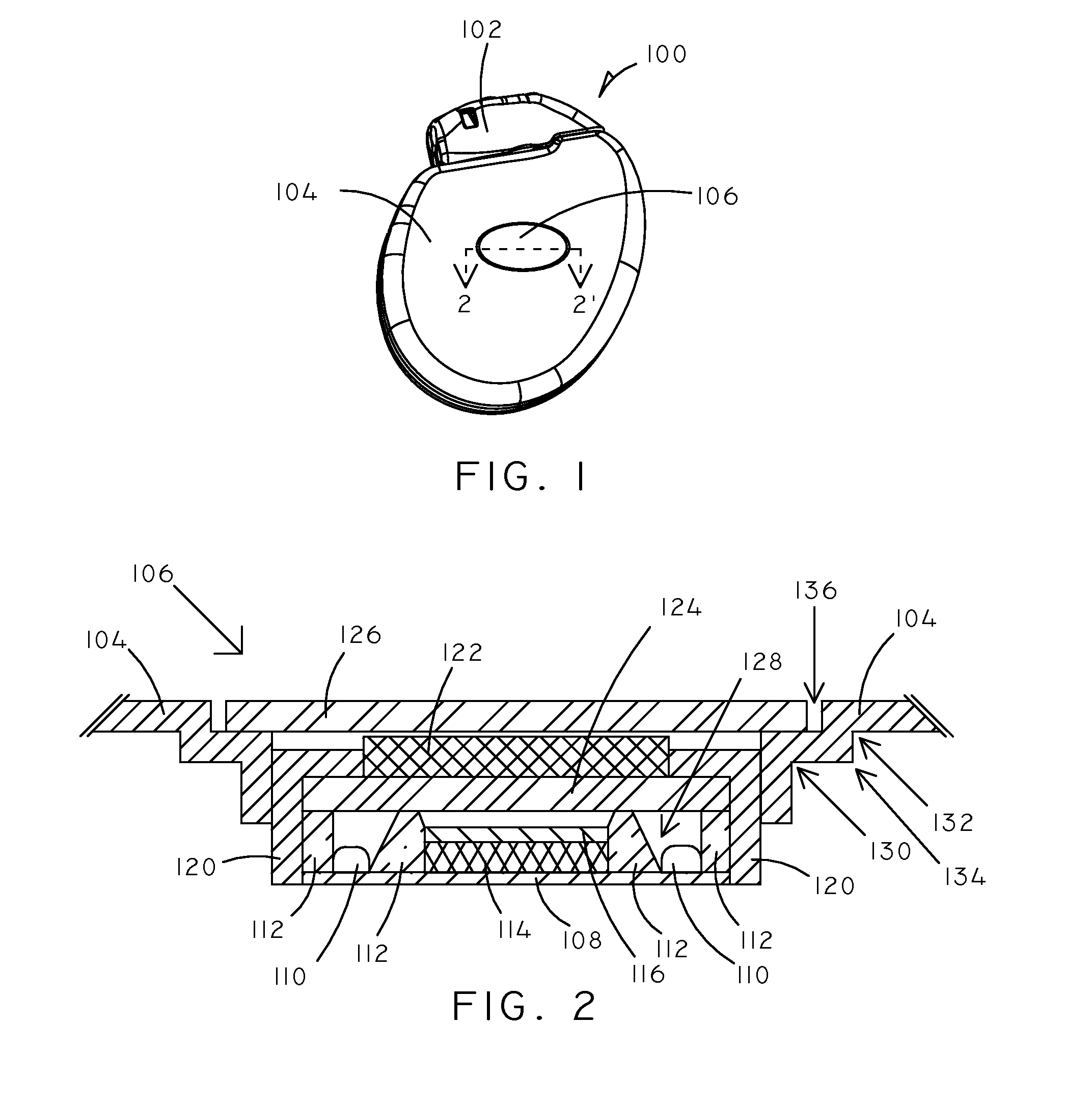Implantable electro-optical sensor
a technology of electro-optical sensors and implantable sensors, which is applied in the field of implantable sensors, can solve the problems of unique design problems, less frequency of physiological analyte measurements, and low success rate of implantable sensors
- Summary
- Abstract
- Description
- Claims
- Application Information
AI Technical Summary
Problems solved by technology
Method used
Image
Examples
Embodiment Construction
[0024]Physiological analyte concentrations are important data points for both the diagnosis and treatment of many medical problems. For example, knowledge of potassium ion concentrations can be important to the correct diagnosis of cardiac arrhythmias. Likewise, the concentrations of other physiological ions, such as sodium and calcium, can also be important in the diagnosis and treatment of cardiac arrhythmias.
[0025]Beyond cardiac rhythm problems, analyte sensing can also be useful in the context of monitoring drug therapy, monitoring renal function, titrating drugs (such as hearth failure medications), monitoring for heart failure decompensation, and observing primary electrolyte imbalance subsequent to dietary intake or renal excretion variations, amongst other uses.
[0026]The use of implantable sensors for assessing physiological analyte concentrations can be a particularly valuable approach because data can be gathered as often as desired without inconveniencing the patient. In ...
PUM
 Login to View More
Login to View More Abstract
Description
Claims
Application Information
 Login to View More
Login to View More - R&D
- Intellectual Property
- Life Sciences
- Materials
- Tech Scout
- Unparalleled Data Quality
- Higher Quality Content
- 60% Fewer Hallucinations
Browse by: Latest US Patents, China's latest patents, Technical Efficacy Thesaurus, Application Domain, Technology Topic, Popular Technical Reports.
© 2025 PatSnap. All rights reserved.Legal|Privacy policy|Modern Slavery Act Transparency Statement|Sitemap|About US| Contact US: help@patsnap.com



